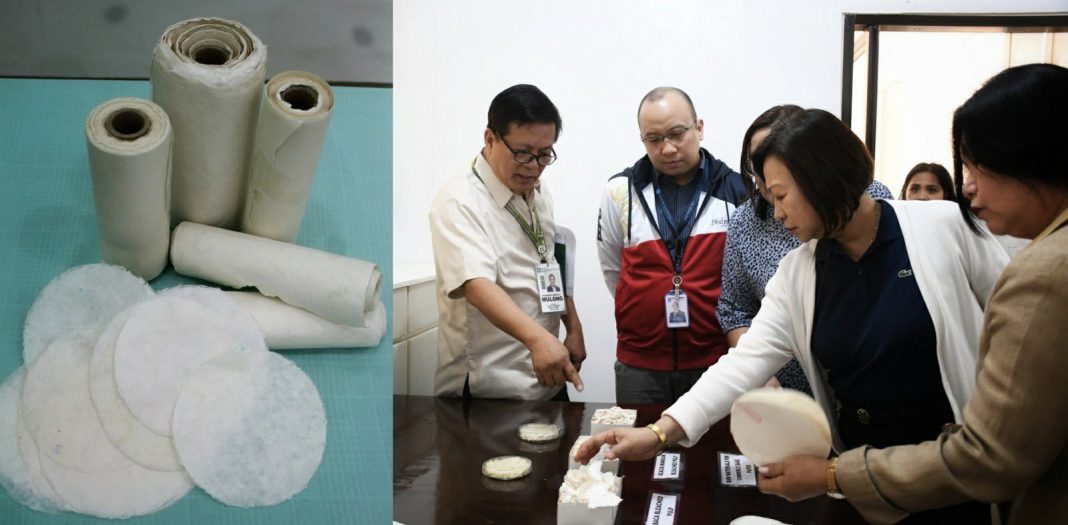By THEPHILBIZNEWS STAFF
Given the high cost of printing paper money factoring materials and process, the Bangko Sentral ng Pilipinas sets eyes on using locally available plant materials for the banknotes.
In the recent visit of the key officials of the Bangko Sentral ng Pilipinas (BSP) at the Department of Science and Technology – Forest Products Research and Development Institute (DOST-FPRDI), it was discussed the possible collaboration in producing currency base paper (CBP) using locally available plant materials for printing the banknotes or paper money.
During the meeting, Adela S. Torres of the Institute’s Pulp and Paper Products Development Section presented the results of the laboratory-scale production of CBP handsheets.
Cooked and bleached abaca specialty pulp, salago bast fibers and mangium chips were formed into CBP handsheets at the DOST-FPRDI Pulping and Papermaking Laboratory.
“Tests showed that the handsheets’ folding endurance was similar to that of imported currency base paper, aside from having superior tear strength,” explained Torres.
She added that the BSP officials had signified their interest in the “Pulp and Paper Enhancement Research from Local Sources (PAPEL)” program, which aims to produce specialty and security base paper using 100% locally-sourced fibers.
Thru the project, the Institute will procure a paper machine for “security/specialty-grade paper with modern wastewater treatment facility” to pilot-test the production of CBP, abaca waste fibers as reinforced packaging papers, and security-based papers used in printing land titles and passports, among others. The machine can produce at least six tons of paper in a day.
“With the help of a private company that will adopt DOST-FPRDI’s technology, we look forward to supplying at least 20% of BSP’s CBP requirement. We will also explore the possibility of supplying other countries’ needs, particularly those that have yet to produce their own CBPs,” shared Torres.
Currently, Philippine banknotes are printed on imported CBP made from 20% abaca and 80% cotton. While the country produces and exports large volume of abaca pulp, it still imports about 780,000 kg of CBP yearly.
“Producing our own paper money using locally sourced materials will not only promote our local fibers but will also save us lots of money. According to BSP, approximately three billion pesos is spent annually in printing new banknotes to replace deteriorated or demonetized ones,” said Torres.
“We are just awaiting the green light and funding for the PAPEL program. Right now, a Memorandum of Understanding (MOU) between DOST-FPRDI and BSP is being prepared,” she concluded.














